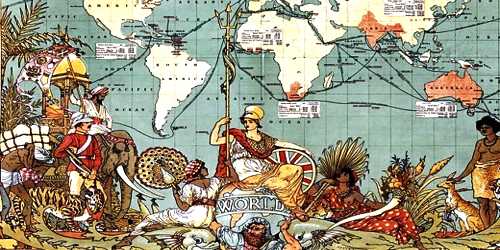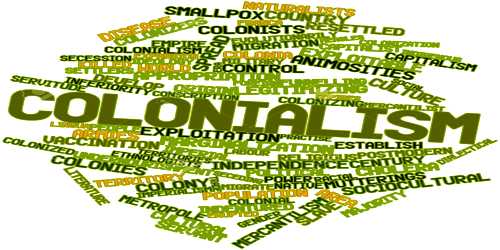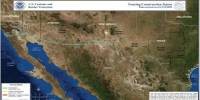European Expansion
In looking at the disparity between the countries of the North (us) and the South (Africa, South America etc), one must start by understanding where the situation came from. In other words:
- Why is the South so poor?
- Why are we in the North so rich?
- Has it always been this way?
The answer to these questions can be found by examining the recent history of Europe, its expansion throughout the rest of the world and the system of control and exploitation it established. This system was colonialism.
First we must consider the three major events that turned the countries of Europe outward. These are:
The Voyages of Discovery
After more than 1000 years of isolation and within a few short decades (1490 – 1520), European countries sailed over the sea and took commanding positions in the Western hemisphere and much of Southeast Asia. There were three motivating factors for the expansion and these were:
- Economics
- The Quest for knowledge about the world
- The Quest for heathens to convert to Christianity
Also known as : Three G’s:
God: the European nations saw themselves as “civilized and felt compelled to convert the savages to Christianity as well
Gold: The nations of Europe were involved in a race for the riches provided through raw materials and natural resources
Glory: the monarchs and European Empires wanted to leave their mark on the far reaches of the globe
The single most significant motivation was economics. The quest for Asian spices (Pepper, cinnamon, nutmeg, ginger) and other luxury goods led to explorers seeking new routes after the Islamic take over of the Silk Road (an overland trade route between Europe and Asia).

Scientific Revolution
Prior to 17th century, European thinkers believed all knowledge came from religion and all that could be known was. The Voyages of Discovery proved that all knowledge was not known and soon scientists starting appearing in Europe. They fostered a mechanistic worldview and included such thinkers as Newton and Descartes.
The Enlightenment – Occurring for most of the 18th century, it had three premises:
- The universe can be understood
- Knowledge can be gained through the Scientific method
- Humanity can be educated
It resulted in the application of new scientific thought to technology, specifically ships and weapons.
The Industrial Revolution (mid 18th through 19th centuries)
The Industrial Revolution was a time of dramatic change in the nature of work. Machines replaced people with tools, steam and other energy sources replaced animal power, and skilled workers were replaced with mostly unskilled workers.
The Industrial Revolution had several important outcomes including:
- Use of large powerful machines
- Growth of factories
- Increased demand for raw materials (supplied by colonies in Africa, India etc.)
- Surplus of manufactured technologies and goods
- Population boom
Demand for raw materials
+ Superior technology
+ Recently conquered territories
= Colonialism
Colonialism
A racist system of political, economic, and cultural domination forcibly imposed by a technologically superior foreign minority on a native majority. It depended on economic exploitation and political oppression that usually took one of two forms:
- Informal Imperialism – The State builds commercial and political relationships with indigenous elite that does not involve military conquest or land occupation.
- Formal Imperialism – European powers by force of arms and by the occupying presence of settlers, conquered territories bringing land and people under their direct authority.
With the advent of the Industrial Revolution, European countries found they needed two things.
- Raw materials – the new factory system consumed Europe’s raw materials at an incredible rate and very soon it was necessary to look elsewhere.
- New customers – the new factory system also produced a surplus of goods that the European population could not consume. New consumers were needed elsewhere.
This formed the basis of the economic cycle that was to trap the Colonies to this day – a wide scale imbalance of trade. This refers to unequal value placed on the products being traded between countries. Raw materials are worth much less than manufactured goods.
In general there are two broad categories of colonialism. These are:
Colonies of Settlement
- These were large-scale foreign settlements. Native peoples were forcibly moved or killed and the foreign culture was transplanted to the new area.
- With regard to European colonialism, this type only occurred in areas where the climate closely resembled Europe, the best examples being Canada and the US. These colonies brought with them European technology, education and economies. As such, they quickly developed a degree of independence and an economy based on manufacturing. Eventually they would rival and then outgrow the European states.
Colonies of Exploitation
These were colonies where political control was established but no large-scale foreign settlement occurred. Control was established through force or an alliance with the local ruling elite. In the case of European colonialism, the areas of Africa, the Caribbean and South and Central America are the best examples. In the absence of European immigration, no manufacturing industries were permitted to develop and native peoples in those areas were forced to work on exporting raw materials to Europe.
The Colonial Slave Trade
Among the many abuses of colonialism, none was worse than the slave trade. During the 400 years of European colonialism it has been estimated that 12 million African people were taken from Africa as slaves for western colonies. Of this number more than 2 million did not survive the trip, known as the “Middle Passage”.
In looking at colonialism in the “New World” one can see two very distinct systems at work. These are referred to as the North Atlantic system and the South Atlantic system.
The North Atlantic System
This system emerged in Canada and the northern US and was based primarily on fishing, timber and furs. There was no need for large collections of slave labour for these activities. In the case of furs, trading with Native peoples was more effective as they were far more efficient trappers. This is not to suggest that northern native peoples did not suffer at the hands of the European settlers because they definitely did.
The South Atlantic System
This system developed in South and Central America as well as in the Caribbean. Colonies established in these areas concentrated on silver, tobacco and later cotton. Without significant European immigration, slavery became the main method for getting these resources. Mining and farming require lots of labour and so initially local indigenous peoples were forced into slavery but soon inhuman conditions and disease decimated the population.
Throughout the “New World” disease absolutely ravaged the indigenous populations. Europeans brought with them diseases (like small pox) that did not exist in North and South America. The cost in human life was staggering but particularly deadly in the South where local populations were concentrated together on plantations or around mines. In Mexico, the indigenous population declined by 90% in the first 100 years of Spanish rule. The island of Hispaniola had a population of 250,000 in 1492 but only 500 by 1538.
As local indigenous populations rapidly declined, European colonies looked for a new source of labour and found it along the West Coast of Africa. The African population had exposure to the diseases present in Europe and so was as resistant to them as Europeans. Thus the “Middle Passage” slave trade was born and the largest single movement of people prior to WWII began. It would profoundly change the world.
It has been said the wealth of the industrialized North (US, Canada, Europe) was made possible by the slavery of African people. One could certainly make a strong case for this idea. Think about it.
When colonialism ended in the years after WWII, the colonies of settlement (Canada, The United States) were long independent with large industrialized economies and considerable wealth. The colonies of exploitation emerged from colonialism much as they entered it, lacking an industrialized economy and now without ownership of most of their resources. The heirs of colonialism, large European and North American companies, owned or controlled the wealth in the former colonies. This situation has led to many claims that colonialism has not really disappeared but rather has taken on a new form generally referred to as “neocolonialism”.
Decolonization
Decolonization was the process by which the British and French empires were dissolved. Their colonies in Asia, Africa and the Middle East were granted independence. This happened within three major clusters:
- 1940’s Southeast Asia
- 1950’s North Africa
- 1960’s Sub-Africa.
Decolonization happened as a result of the following:
- WWII devastated the British and French empires; they had no strength left for colonial rule.
- A desire for independence among the colonies after WWII.
- The formation of the United Nations and the emergence of the U.S. as a super power.
After Independence – “Origins of the Third World”
- The newly independent states brought a new sense of self-respect and personal and national dignity to people, high hopes of a better life and social change.
- These hopes soon dissolved in the face of mass poverty, unemployment, ethnic quarrelling, poor housing, disease and human rights violations.
- Corrupt regimes, military dictatorship and one-party rule added to the problems the new colonies faced.
These problems were largely due to the fact that Colonialism had left the new nations unprepared. Their economies were based on producing raw materials using unskilled labour. They could not complete with the modern economies of the North but suddenly found themselves having to. These new countries had to rely on previous empires and new powers, for financial assistance and technological advice.
The Effects of Decolonization
- Decolonization gave way to a large migration of peoples to the former empires of France and Britain.
- More than 16 million people moved during the decolonization period that followed the Second World War.
- Mass migration resulted in complicated urban patterns, race riots and the enrichment of cultures
















